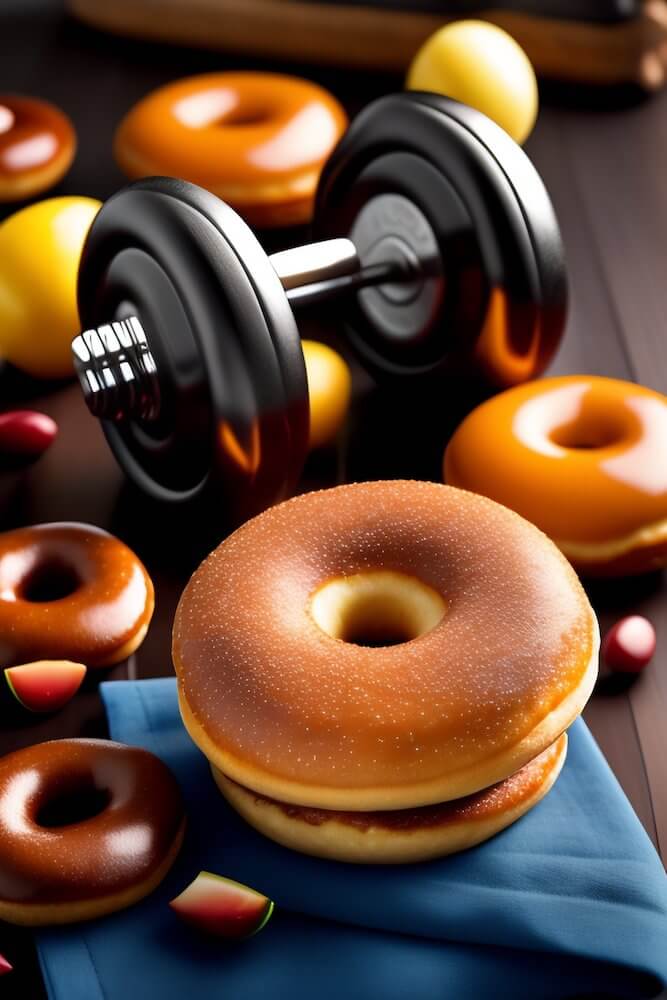
Latest Videos
Maintaining a balanced diet is key to achieving optimal health and well-being. A well-balanced diet provides the body with the essential nutrients it needs to function properly, while reducing the risk of chronic diseases. In this article, we will answer some common questions about balanced diets and provide tips on how to create a balanced meal plan.
What is a Balanced Diet and Why is it Important?
A balanced diet is a meal plan that includes all the necessary nutrients in the right proportions to maintain optimal health. A balanced diet provides the body with carbohydrates, proteins, healthy fats, vitamins, and minerals that it needs to function properly.
Diet is important because it provides the body with the energy it needs to perform daily activities, aids in weight management, and reduces the risk of chronic diseases such as heart disease, diabetes, and certain cancers.
7 Things You Need for a Balanced Diet
Diet Balancing includes the following seven essential nutrients in the right proportions:
1. Carbohydrates
Carbohydrates provide the body with energy and are found in foods such as fruits, vegetables, grains, and legumes. It is important to choose whole-grain options that are high in fiber, as they are more filling and help to maintain a healthy weight.
2. Proteins
Proteins are essential for the growth and repair of body tissues, including muscles, skin, and organs. Good sources of protein include lean meats, fish, eggs, beans, and nuts.
3. Healthy Fats
Healthy fats are important for the absorption of vitamins and minerals, as well as maintaining healthy skin and hair. Examples of healthy fats include olive oil, nuts, and fatty fish such as salmon.
4. Vitamins
Vitamins are important for the proper functioning of the body and can be found in fruits, vegetables, and whole grains. Eating a variety of fruits and vegetables will provide the body with a range of vitamins.
5. Minerals
Minerals are essential for the proper functioning of the body and can be found in foods such as dairy, leafy green vegetables, and nuts.
6. Water
Water is important for hydration and maintaining bodily functions. It is recommended to drink at least 8 glasses of water per day.
7. Fiber
Fiber is important for maintaining a healthy digestive system and can be found in fruits, vegetables, and whole grains.
5 Balanced Diets
A balanced diet can take many forms, but here are five examples of balanced diets:
1. Mediterranean Diet
The Mediterranean diet is a plant-based diet that includes fruits, vegetables, whole grains, lean protein, and healthy fats such as olive oil.
2. DASH Diet
The DASH diet focuses on reducing sodium intake and includes fruits, vegetables, whole grains, lean protein, and low-fat dairy products.
3. Vegetarian Diet
A vegetarian diet excludes meat but includes other sources of protein such as beans, nuts, and soy products.
4. Vegan Diet
A vegan diet excludes all animal products, including meat, dairy, and eggs. Vegan diets can be healthy, but it is important to ensure that the body is getting all the necessary nutrients.
5. Low-Carb Diet
A low-carb diet focuses on reducing carbohydrate intake and includes foods such as meats, fish, eggs, and non-starchy vegetables.
Benefits of a Healthy Diet
Maintaining a healthy diet has numerous benefits, including:
- Reducing the risk of chronic diseases such as heart disease, diabetes, and certain cancers.
- Maintaining a healthy weight.
- Improving mood and cognitive function.
- Increasing energy levels.
- Improving sleep quality.
- Reducing inflammation in the body.
Examples of a Balanced Diet
A balanced diet includes a variety of foods from each of the seven essential nutrient groups. Here are some examples of a balanced diet:
- Breakfast: oatmeal with almond milk, berries, and nuts.
- Snack: apple slices with peanut butter.
- Lunch: grilled chicken breast with brown rice and roasted vegetables.
- Snack: Greek yogurt with honey and granola.
- Dinner: baked salmon with quinoa and steamed broccoli.
- Snack: sliced cucumber with hummus.
What Should I Eat Every Day?
The USDA recommends that adults consume the following every day:
- Fruits: 2 cups.
- Vegetables: 2.5 cups.
- Grains: 6 ounces, with at least half being whole grains.
- Protein: 5.5 ounces.
- Dairy: 3 cups of low-fat or fat-free dairy.
How Do I Make Myself a Balanced Diet?
To make yourself a balanced diet, follow these steps:
- Determine your calorie needs based on your age, gender, height, weight, and activity level.
- Choose a variety of foods from each of the seven essential nutrient groups.
- Aim for at least five servings of fruits and vegetables per day.
- Choose whole-grain options for bread, pasta, and cereal.
- Choose lean protein sources such as chicken, fish, beans, and nuts.
- Incorporate healthy fats such as olive oil, nuts, and fatty fish.
- Drink at least 8 glasses of water per day.
- Limit processed and sugary foods.
What is the Most Balanced Meal?
A balanced meal includes a variety of foods from each of the seven essential nutrient groups. Here is an example of a balanced meal:
- Grilled chicken breast (protein)
- Quinoa (carbohydrates)
- Steamed broccoli (vegetables)
- Sliced avocado (healthy fats)
- Apple slices (fruit)
What are the 10 Most Healthy Foods?
The following foods are considered to be some of the healthiest:
- Leafy green vegetables such as spinach and kale.
- Berries such as blueberries and raspberries.
- Salmon (a fatty fish)
- Nuts such as almonds and walnuts.
- Whole grains such as oats and quinoa.
- Greek yogurt (a source of protein and probiotics)
- Beans such as black beans and lentils.
- Sweet potatoes (a source of fiber and vitamin A)
- Olive oil (a healthy fat)
- Green tea (a source of antioxidants)
What are the 3 Foods to Quit?
There are no specific foods that need to be completely eliminated from the diet, but it is recommended to limit the intake of processed and sugary foods. Here are three foods to limit:
- Soda and other sugary drinks.
- Fried foods.
- Processed snacks such as chips and cookies.
What is the Most Unhealthy Food?
The most unhealthy food is subjective and can vary depending on personal preferences and dietary restrictions. However, foods that are high in trans fats, sodium, and added sugars are generally considered to be unhealthy. Examples include fast food, processed snacks, and sugary drinks.
What is the Single Healthiest Food?
There is no single food that is the healthiest, as a balanced diet includes a variety of foods from each of the seven essential nutrient groups. However, some foods are considered to be particularly nutrient-dense, such as leafy green vegetables, berries, and fatty fish.
Conclusion
A balanced diet is essential for maintaining good health and preventing chronic diseases. It should include a variety of foods from each of the seven essential nutrient groups, such as fruits, vegetables, whole grains, lean proteins, and healthy fats. Eating a balanced diet has numerous benefits, including increasing energy levels, improving sleep quality, and reducing inflammation in the body. To make yourself a balanced diet, it is important to determine your calorie needs and choose a variety of nutrient-dense foods. Additionally, it is recommended to limit the intake of processed and sugary foods.
FAQs
-
Why is a balanced diet important?
A balanced diet is important for maintaining good health and preventing chronic diseases. It provides the body with essential nutrients, vitamins, and minerals that are necessary for optimal function.
-
What are the benefits of a healthy diet?
Eating a healthy diet has numerous benefits, including increasing energy levels, improving sleep quality, reducing inflammation in the body, and preventing chronic diseases such as diabetes, heart disease, and cancer.
-
What foods should I eat every day?
The USDA recommends that adults consume fruits, vegetables, grains, protein, and dairy every day. Specific recommendations vary depending on age, gender, height, weight, and activity level.
-
How do I make myself a balanced diet?
To make yourself a balanced diet, it is important to choose a variety of nutrient-dense foods from each of the seven essential nutrient groups, including fruits, vegetables, whole grains, lean proteins, and healthy fats. Additionally, it is recommended to limit the intake of processed and sugary foods.
-
What is the most balanced meal?
A balanced meal should include a variety of foods from each of the seven essential nutrient groups, such as protein, carbohydrates, vegetables, fruit, and healthy fats. An example of a balanced meal is grilled chicken breast with quinoa, steamed broccoli, sliced avocado, and apple slices.
-
What are the 10 most healthy foods?
The 10 most healthy foods include leafy greens such as spinach and kale, berries, nuts, beans and legumes, whole grains, fatty fish such as salmon, cruciferous vegetables such as broccoli and cauliflower, sweet potatoes, eggs, and lean proteins such as chicken and turkey breast.
-
What are the 3 foods to quit?
The 3 foods to quit are processed foods, sugary drinks, and high-fat meats such as bacon and hot dogs. These foods are high in calories, saturated fats, and added sugars and can contribute to weight gain and chronic diseases.
-
What is the most unhealthy food?
The most unhealthy food is subjective and can vary depending on personal preferences and dietary restrictions. However, some commonly recognized unhealthy foods include fast food, fried foods, sugary snacks and desserts, processed meats, and high-fat foods.
-
What is the single healthiest food?
The single healthiest food is difficult to pinpoint as a variety of foods offer different health benefits. However, some nutrient-dense foods that are considered exceptionally healthy include leafy greens, berries, nuts, fatty fish, and whole grains.
-
Can a balanced diet prevent chronic diseases?
Yes, a balanced diet can prevent chronic diseases such as diabetes, heart disease, and cancer. Consuming a diet rich in fruits, vegetables, whole grains, and lean proteins can reduce the risk of chronic diseases by providing the body with essential nutrients and antioxidants. Additionally, limiting the intake of processed and sugary foods can improve overall health and reduce the risk of chronic diseases.





